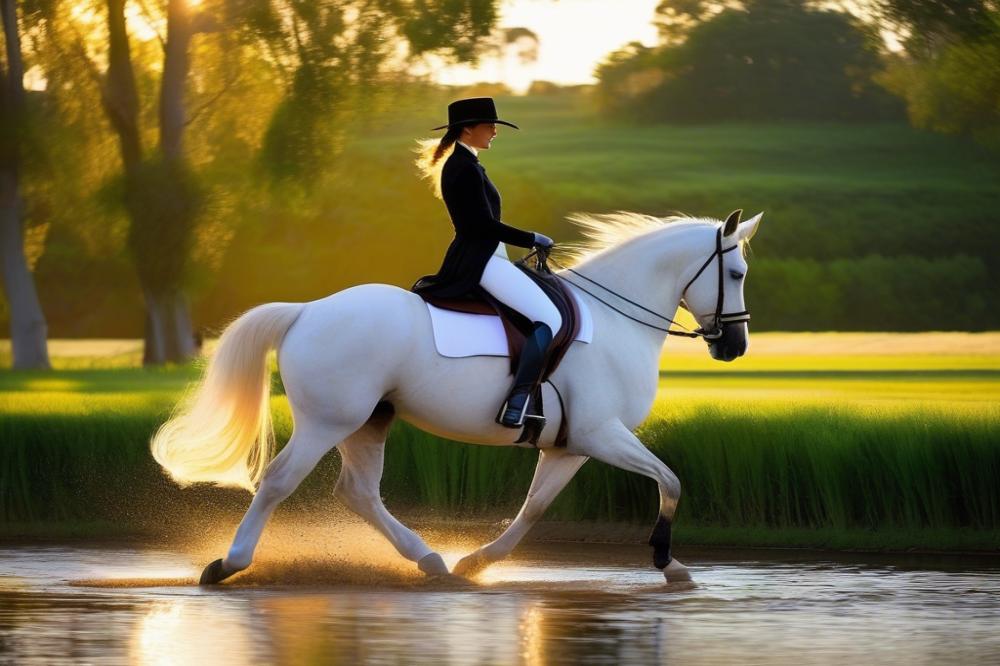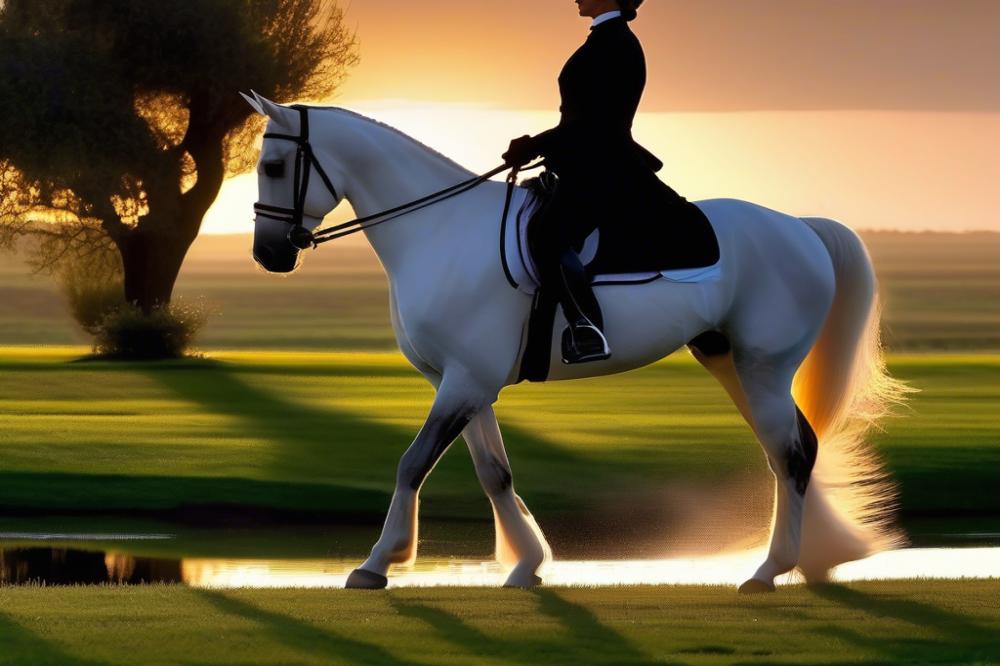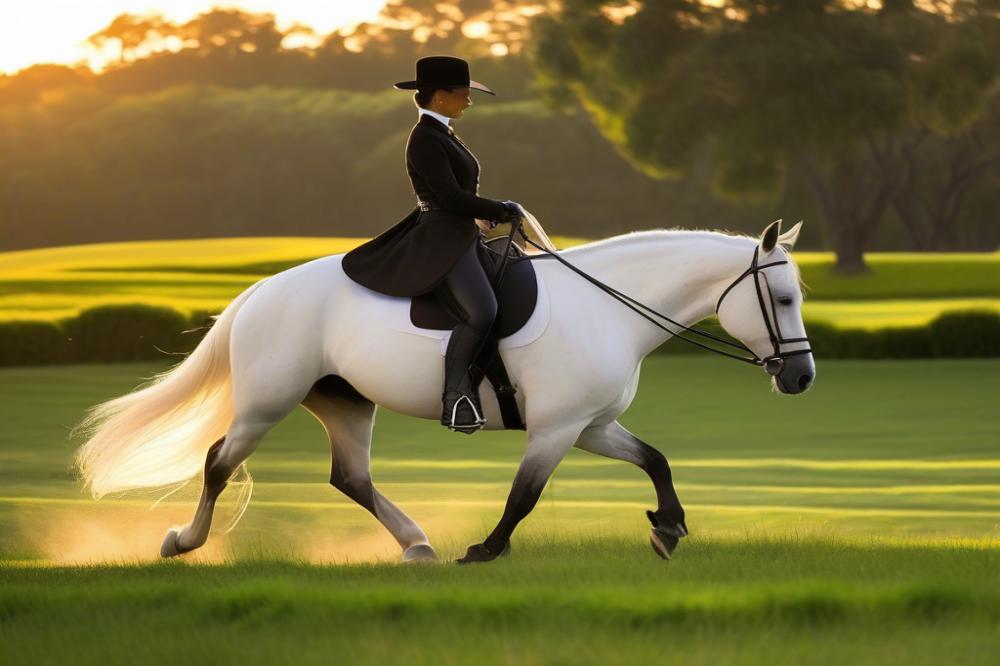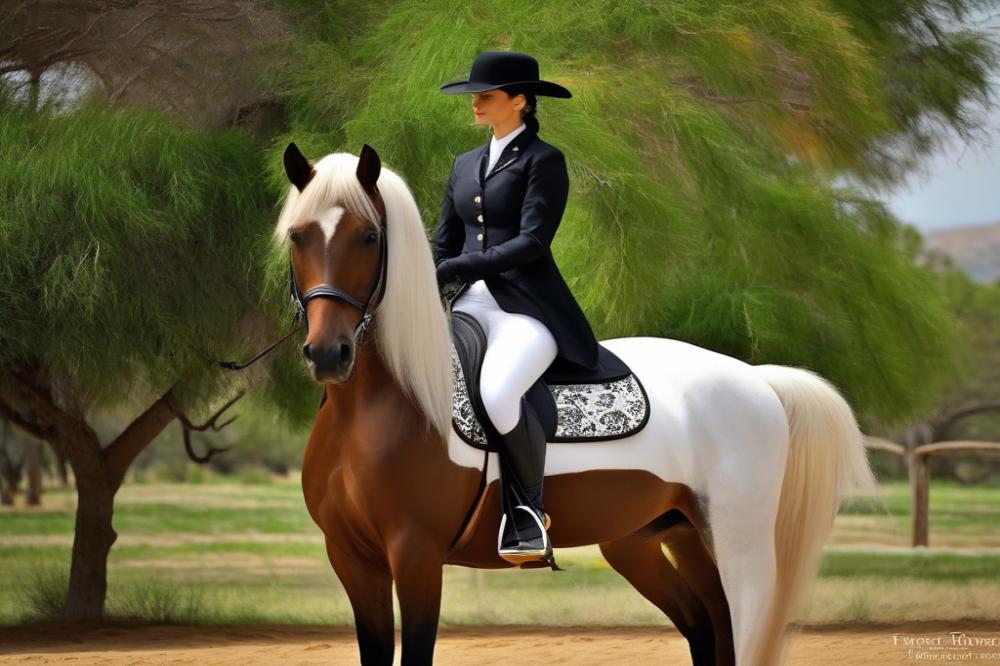Understanding Paso Fino riding
Paso Fino riding offers a captivating experience for equestrians, steeped in tradition and grace. The unique rhythm and movement of the Paso Fino horse captivate riders and spectators alike. With its distinctive four-beat gait, this breed stands apart in the horse world. That distinctiveness makes riding these animals a pleasure. Riders often seek to master the art of movement, requiring finesse and skill. Mastering this discipline goes beyond mere enjoyment; it can deepen the bond between horse and rider.
Emphasizing smooth transitions is vital in this style of riding. When a rider can shift gracefully from one pace to another, it creates a harmonious experience for both horse and rider. smooth transitions signify a well-coordinated pair, showcasing control and understanding. Achieving this connectivity takes practice and patience but offers rewards in the form of a polished performance. Moreover, it reflects the rider’s ability to communicate effectively with the horse.
The Paso Fino breed possesses distinct characteristics that enhance riding. Known for their compact bodies and strong legs, these horses are both athletic and beautiful. Their calm demeanor serves to make them approachable animals for all levels of riders. Additionally, they often exhibit an eagerness to please, which contributes to a rewarding partnership. Understanding these features can help riders become more attuned to their horses’ needs during training and performance.
Understanding the Paso Fino horse

The Paso Fino horse stands out among equine breeds for various reasons. Known for its smooth gait, this horse offers a unique riding experience. Their shiny coats and elegant build catch the eye, but there is more to these horses than just appearance. Paso Finos have a calm demeanor that makes them friendly companions, ideal for riders of all ages.
Unique Characteristics of the Paso Fino Horse
These horses are often about 13.2 to 15.2 hands tall, giving them a compact and sturdy form. Their natural beauty is enhanced by strong muscles and a refined head. Another fascinating feature is their ability to adapt to various settings, whether it’s a leisurely trail ride or a competitive event. Owners appreciate their intelligence and willingness to learn, which contributes to a rewarding experience for both horse and rider.
Gaits and How They Differ from Other Breeds
Stepping into the world of equestrian riding, one cannot overlook the gaits of the Paso Fino. They are famous for their four distinct gaits: the passo corto, paso largo,_warning, and a natural, smooth walk. Unlike other breeds, which often trot or canter, these horses glide with a rhythmic elegance. This unique movement allows for the rider to enjoy a seamless transition. Transitions feel like floating, with minimal bounce or jarring shocks. The result is a ride that leaves the rider with a feeling of comfort and poise.
Importance of Understanding Equine Communication for Effective Riding
Communication between horse and rider plays a crucial role in mastering smooth transitions. Horses are skilled at reading body language, so it’s essential to pay attention to cues and signals. A gentle squeeze of the legs or a shift in weight can convey messages that lead to better cooperation. Riders should also be aware of their own emotions. A calm rider fosters a calm horse. Patience and understanding are vital. Building this connection creates trust, resulting in smoother rides. Remember, the bond you form with your horse will greatly enhance the riding experience.
Fundamental riding techniques for Smooth Transitions

Essential Riding Posture and Balance in Riding
Maintaining the right posture is key for every rider. Start by sitting tall in the saddle. Your shoulders should be back, and your hips aligned with your heels. A balanced seat enables better communication with your horse. Weight should rest evenly in both stirrups. This balanced position can help you absorb the horse’s movements.
Keep your legs relaxed against the horse’s sides. Tension in your legs can disrupt fluidity during transitions. A soft grip on the reins also plays an important role. It allows the horse to respond to subtle cues. When your posture is correct, transitions can feel much smoother.
The Role of Effective equestrian training
Training is vital for both horse and rider. Building a solid foundation of skills will improve performance. Focus on groundwork exercises with your horse. These work on responses to cues and enhance understanding. You learn to connect better with your horse in the process. Regular practice reinforces these principles, making them instinctive.
Work with a qualified instructor when possible. An experienced coach can pinpoint areas for improvement. Constructive feedback allows you to adjust techniques effectively. Over time, you will notice progress in your riding ability.
Key riding techniques to Maintain Smooth Transitions
Several techniques contribute to seamless transitions. Begin by preparing your horse well in advance. Communicate your intentions clearly through your body language. Use your seat to signal changes in pace. Shifting weight forward can encourage the horse to move up. Leaning back can indicate readiness for a slower gait.
Employ your legs to reinforce these commands. Squeezing gently or giving a kick can motivate your horse. However, it is important to avoid jerky motions. Fluid actions create a more harmonious experience. Keep your hands steady to maintain a light connection with the bit.
Practice transitions frequently, both under saddle and on the ground. Incorporating various exercises can enhance responsiveness. Consider integrating circles and lateral movements into routine rides. These variations promote agility and balance.
Remember, being patient enhances the process. Riding is a journey that requires time and persistence. Each transition may present challenges along the way. A calm mind will facilitate a stronger bond with your horse. This bond is essential for smooth and controlled transitions.
Gait Transitions in Paso Fino Riding

Understanding the unique gaits of a Paso Fino is essential for riders. These horses are known for their distinctive four-beat lateral gaits, which include the classic Paso, the Paso Corto, and the Paso Largo. Each gait has its unique rhythm and speed. Transitioning smoothly between these gaits requires both horse and rider to be in sync. Observing how your horse responds to cues is crucial.
Techniques for Achieving Seamless Gait Transitions
Clear communication is key in connecting with your horse. Use subtle aids to signal changes in gait. Light pressure with your legs or a gentle shift in your weight can make a big difference. Practicing these cues repeatedly will create muscle memory for both you and your horse.
Riders should maintain steady posture during transitions. Sitting deeply in the saddle stabilizes the rider’s body and allows for more effective communication. Keep your hands steady, as any jerky movements may confuse your horse. Focusing on your breath can also help create a calm environment for both partners.
Exercises to Improve Horse Agility and Rider Coordination
Incorporating specific exercises can enhance both agility and coordination. Starting with basic figures like circles or serpentines helps in building responsiveness. These activities not only improve transitions but also encourage the horse to engage its hindquarters efficiently. As you practice, consistency matters. Regular drills will gradually improve the flow of movements.
Another beneficial exercise involves incorporating simple transitions within your ride. For instance, moving from a walking pace to a low gait and then to a quicker one helps build control. This practice can also build confidence in your horse. It’s important to celebrate small successes along the way.
Working in partnership fosters deeper communication. Pay attention to your horse’s reaction during each exercise. Adjustments may be needed based on how your horse feels that day. This ongoing dialogue brings you closer together, improving overall performance. Engagement is the foundation of a successful transition.
Training Exercises for Paso Fino Riders
Improving your riding skills involves practical exercises tailored to enhance balance, posture, and timing. Focus on these three critical areas for better performance. Here are some exercises that can help you become a more effective rider.
Balance Exercises
Start with some ground exercises. Walk on a balance beam or line to develop your core balance. This activity can also improve your proprioception, which is the awareness of your body in space. Try to maintain a straight line while walking. Practice this until it feels comfortable.
Once you feel stable, incorporate balance work into your mounted training. Ride at a slow walk and focus on staying centered in the saddle. Your legs should hang naturally. Adjust your position based on how your horse moves. Consider practicing this at different speeds to build your confidence.
Posture Drills
Posture is vital for effective riding. Start by standing against a wall, feet shoulder-width apart. Press your back against the wall, keeping your head up and shoulders back. This exercise teaches you the correct alignment that transfers to your riding stance.
When mounted, keep your shoulders relaxed and your head up. Use a mirror if possible to watch your form. Adjust as needed. It’s essential to stay aware of how your posture affects your horse’s movement. An open chest opens up the horse’s stride.
Timing Techniques
Timing is equally important when riding. Begin practicing with your horse while at a standstill. Place your hands on the saddle and move with the horse as it shifts its weight. This technique helps you feel the natural rhythm. Feel free to repeat this exercise until you are comfortable.
Incorporate transitions in your riding. Start from a walk to a trot. Pay attention to where you feel your horse gaining momentum. Make your cues clear but gentle. This helps improve timing and responsiveness. Be patient with yourself, as this can take practice.
Integrating Ground Exercises
Groundwork supports mounted exercises significantly. Spend time with your horse on a lunge line. Focus on maintaining your horse’s rhythm while you walk alongside. This lets you observe its movements closely and teaches you how to influence them.
Practice ground poles with your horse. Guide it over poles while walking at a steady pace. This activity enhances both the horse’s balance and your timing. Coordinate your movements so they remain smooth and fluid, whether you are on the ground or in the saddle.
Combining these exercises creates a cohesive training approach. Balance, posture, and timing all influence one another, so practice them together. Each session should focus on refining specific skills.
Building a Strong Partnership with Your Horse
Trust and communication lay the foundation for a successful riding experience. When a bond is formed between horse and rider, both become more attuned to each other’s needs. This connection can significantly improve how smoothly transitions occur. Riders should focus on building this relationship over time. Each interaction counts, whether during training sessions, riding, or simple grooming moments.
The Importance of Developing Trust and Communication
Listening to your horse’s body language helps develop trust. Signs of comfort, discomfort, or hesitation are all critical. Understanding these cues is essential for effective communication. Spend time watching how your horse responds to cues. This can reveal a lot about its mood and readiness to learn. Mutual respect creates a safer and more enjoyable environment for both. Regular practice fosters this understanding, allowing both partners to grow together.
Strategies to Improve Equine Communication for Better Transitions
Utilizing clear and consistent cues can lead to better results. Choose signals that are distinct and easy for your horse to understand. Gradually introduce these cues during training sessions. Making transitions more predictable will help your horse respond with confidence. For example, use your voice in conjunction with hand signals. This combination can reinforce what you want your horse to do.
Another effective method is to reward positive behavior. Positive reinforcement encourages your horse to repeat actions. Use treats, pats, or verbal praise to acknowledge good transitions. It will strengthen the bond between you and your horse. Setting small achievable goals is helpful as well. This allows you to celebrate each success along the way.
Building a Consistent Training Routine
A consistent routine creates a sense of security for your horse. Daily practices help retain what has been learned. Keeping sessions short can prevent fatigue and keep your horse focused. Varying exercises can also maintain interest. Consider alternating between groundwork and riding. This keeps training fresh and engaging. Always end on a positive note to foster confidence.
Document your training progress to identify areas for improvement. Keeping a journal can help track specific achievements and challenges. Reflecting on these notes can guide future training strategies. Set aside time each week for focused sessions on transitions. Regular check-ins will reinforce skills and enhance the partnership.
Common Challenges and Solutions in Paso Fino Riding
Riding a Paso Fino can be rewarding, but it comes with challenges. One frequent issue is maintaining smooth transitions between gaits. Riders often find it hard to shift from one speed to another without jarring movements. Understanding where these problems arise is the first step. Common mistakes happen due to improper cues or lack of timing. These errors can disrupt the flow of the ride.
Another challenge involves the horse’s response to cues. Some Paso Finos might not react as expected, leading to frustration. A lack of awareness about how to ask properly for different gaits can cause confusion. Riders sometimes pull on the reins too hard or apply pressure at the wrong moment. This results in stiff movements instead of the fluidity desired.
To overcome these challenges, adjustments to riding techniques are necessary. Focusing on clear cues is essential. Soft rein pressure and gentle leg movements can convey requests better. Drills that emphasize transitions at various gaits help. Practicing these transitions repeatedly builds muscle memory for both the horse and rider. It enhances their ability to work together.
Patience plays a significant role in improving these skills. Progress may be slow at times, but consistency is key. Riders should not rush the process; allowing time for both horse and rider to adapt is crucial. Regular practice sessions can yield great results over time. Each ride provides opportunities to refine technique and strengthen the bond with the horse.
Remember that even experienced riders face these challenges. With dedication and mindful practice, riders can master smooth transitions. Every small improvement contributes to overall success.
Final Thoughts on Riding Smoothly with a Paso Fino
Let’s recap the key strategies for achieving smooth transitions while riding. First, maintaining a relaxed posture is crucial. A gentle seat helps communicate effectively with your Paso Fino horse. Next, focus on your cues. Subtle yet clear signals can guide your horse seamlessly from one gait to another. Additionally, practicing consistent rhythm aids in making every transition feel more natural. Remember that patience is vital as both rider and horse learn together through equestrian training.
Encouragement for continual learning should resonate with each rider. No matter your skill level, there’s always something new to discover. Engage with horses of various temperaments and experience the differences in how they respond. Learn from others—seek feedback from instructors or fellow riders. Regular practice brings improvement; even small sessions can make a big difference.
Ultimately, the joy of riding a Paso Fino transcends technical skill. These horses bring a unique flair to each ride. The smoothness of their gaits creates a magical experience for riders. Connecting with your horse on this journey fosters a bond like no other. So, saddle up and enjoy every moment with your Paso Fino. Embrace the journey and relish the triumphs along the way.



